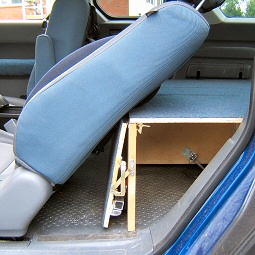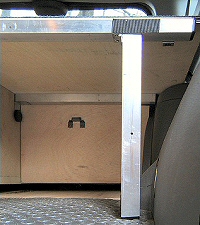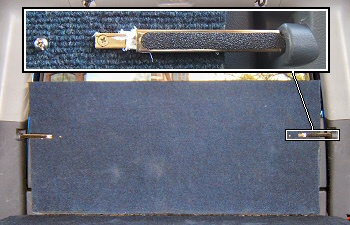Storage Platform
|
Inspiration This platform is based on Msgail's platform. I ended up modifying the design for semi-permanent use, which added considerably to the weight, cost, complexity, parts count, and labor involved. Operation Figure 1 shows the platform opened to its full seven-foot length. Now not only can I sleep in my car, I can stretch out! This configuration is compatible with the Honda cabana and Sportz SUV tent, which work with the hatch and tailgate open. The legs in both extensions retract. The entire unit can be broken down without tools into a fairly small bundle of subassemblies. |
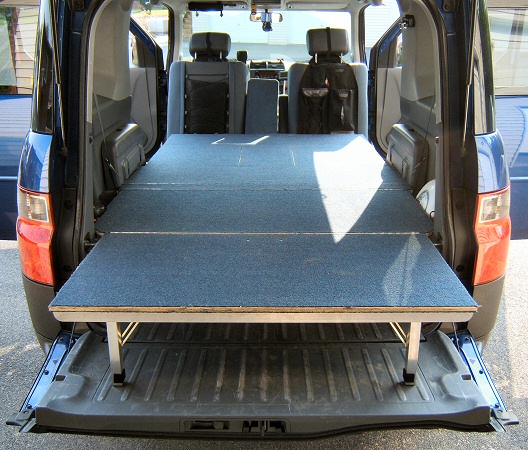 Figure 1 |
|
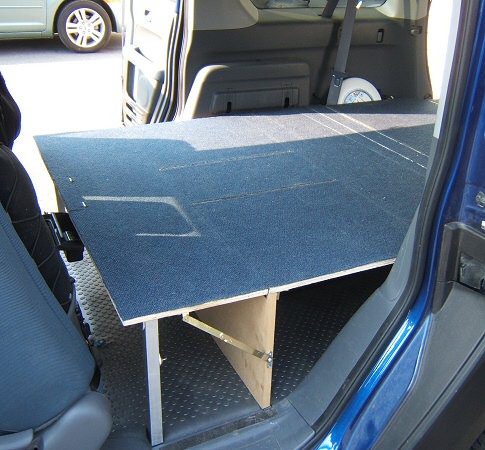 Figure 2 |
Figure 4: Platform in normal driving
configuration. As the lid over the rear storage area is raised past 90°,
the extension forms a triangle that allows the section to stand
up without need for a brace. Rear lower bracket keeps back end of unit aligned.
Center section holds items up to 9" x 9" x 52".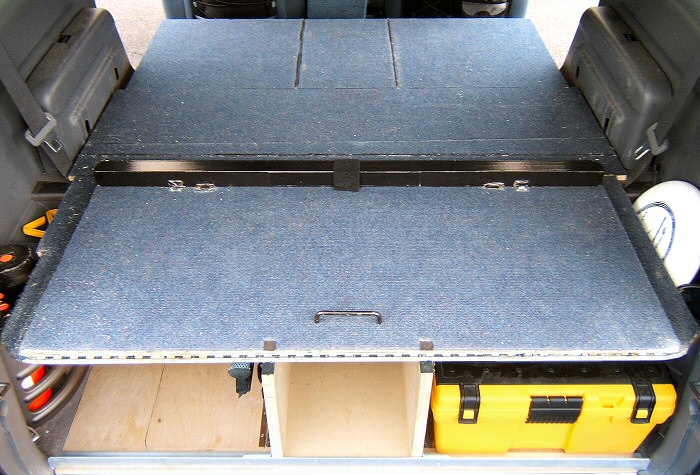 Figure 4 |
|
Each front and rear compartment has a hinged bulkhead that closes
(Figure 5) to prevent cargo from rolling into a middle compartment, or opens (Figure 6)
to accommodate longer items. Bulkheads are stayed with Velcro. |
||
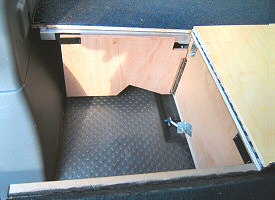 Figure 5 |
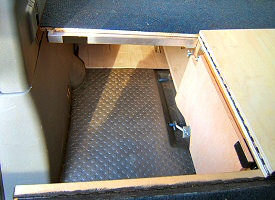 Figure 6 |
|
Figure 7: looking aft; middle compartments with driver's side bulkhead open, passenger's side closed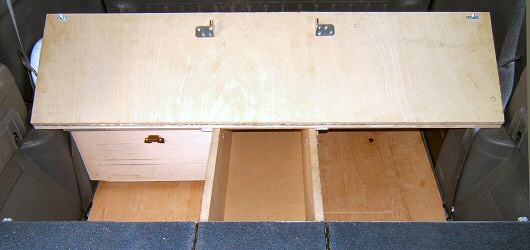 Figure 7 |
Figure 8: looking forward; rear compartments, passenger's side bulkhead closed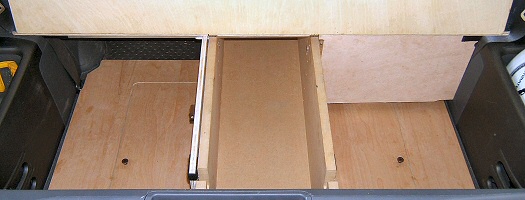 Figure 8 |
|
Figures 9, 10: Emergency gear in spare tire well is accessible through doors cut into cover. |
||
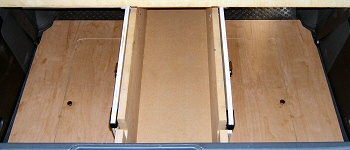 Figure 9 |
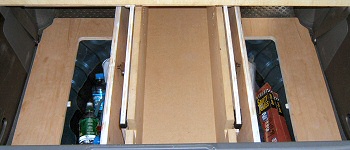 Figure 10 |
|
Dimensions and Construction
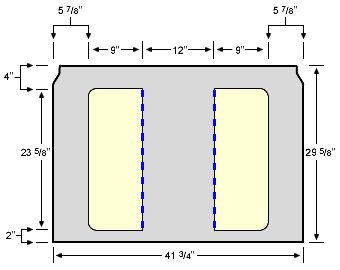 Figure 11 |
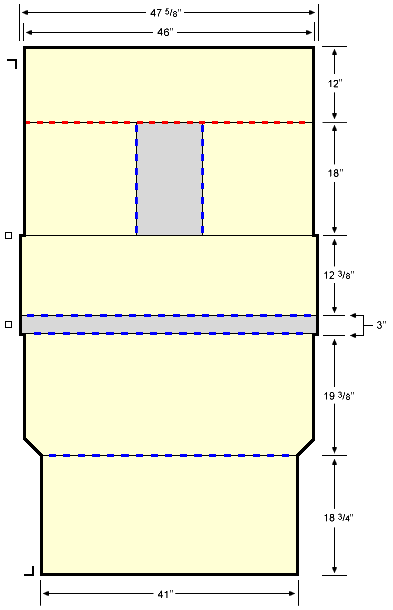 Figure 12 |
Hardware
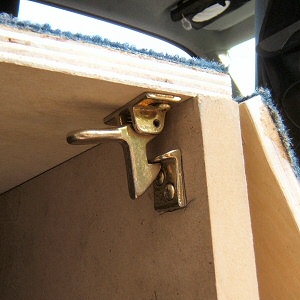 Figure 13: elbow catch on front lid |
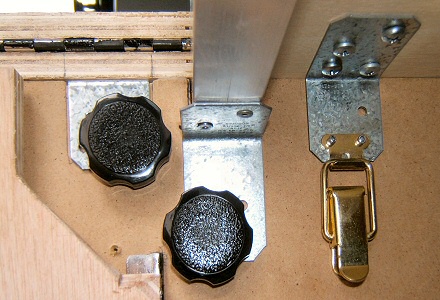 Figure 14: from left, hold-down for center section of front lid; front crossbar and hold-down for front and middle lids; draw hasp for middle lid |
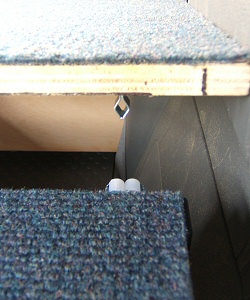 Figure 15: Spring catches hold down outer corners of middle lid, prevent rattling. |
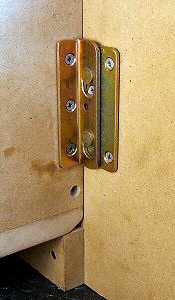 Figure 16: Bed rail brackets secure front of box structure to upright. |
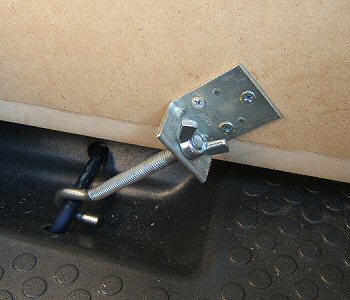 Figure 17: Hold-downs prevent unit from sliding forward. |
|
 Figure 20: Hasp secures front edge of front section's center panel. |
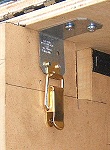 Figure 21: Back end of rear section can be locked down if desired. |
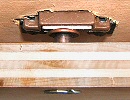 Figure 22: Magnetic catches set into rear bulkheads hold open doors over spare tire well. Knobs are 1/4"-20, wide-shoulder, flathead steel furniture bolts, can be removed in a jiffy. |
|
|
